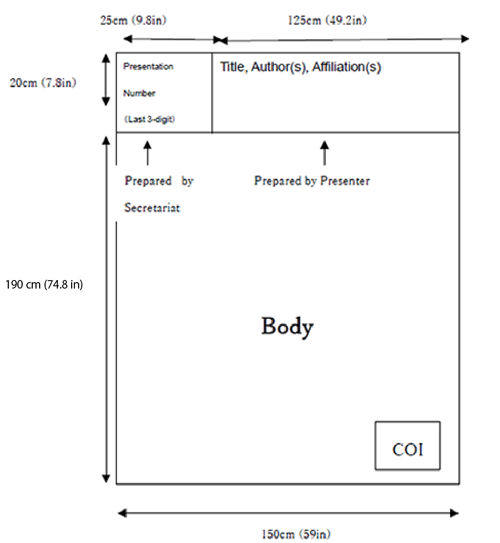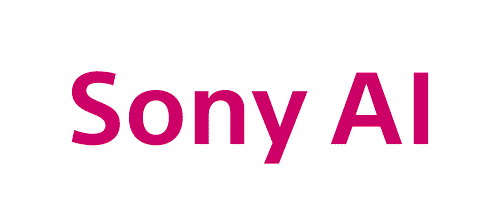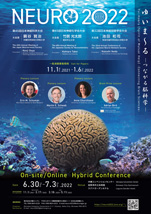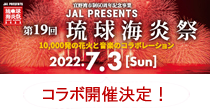For Presenters
For NEURO2022, we humbly request that all session chairs and presenters participate on-site. If on-site participation is difficult due to reasons such as not receiving permission to travel or immigration issues, please fill in the following questionnaire to submit a request for online presentation by Wednesday June 15, 2022 by 17:00 JST.
https://forms.gle/B5Yxi3EYXT5VnP5K9
Details regarding online participation and rehearsals will be sent via mail to those who complete the questionnaire and have been approved for online presentation.
Oral Presentation Guidelines
1.Language
| Program | Presentation | Q&A※ |
|---|---|---|
| Plenary Lectures pecial Lectures Award Lectures | English | English |
| Educational Lectures | English (Japanese permitted) | English (Japanese permitted) |
| Symposia Oral Presentations | English | English (Japanese permitted) |
| Poster Presentations | Japanese/English | Japanese/English |
| Wakate Dojo | Japanese (English permitted) | Japanese (English permitted) |
- In general, Q&A will take place in English; however, the session chair may allow Japanese to support active discussion.
2.Presentation Time
- Symposia: Please follow the chair’s direction.
- Oral Sessions: 10 minutes for presentation, 5 minutes for discussion.
- Wakate Dojo: 7 minutes for presentation, 8 minutes for Q&A times.
3.Presentation
- Presentation slides displayed on the screen and video footage of your presentation will be streamed to online participants through Zoom.
- Presentations should be delivered on your own laptop computer.
- Please bring your computer to the PC Preview Desk 20 minutes prior to your presentation to check the output. Please pick up your computer after your presentation.
- You will not be able to use Presenter View.
- Please bring a connector if you use a Mac computer.
- You may operate your computer by yourself during your presentation.
4.Q&A Session
- Chairs lead Q&A sessions. Please follow your chair’s instruction and answer questions from on-site participants. Please answer questions from online participants which your chair chooses and reads out.
5.Notes on laptop computers
- Bring the AC adaptor for your computer.
- A HDMI cable connector will be provided at the presentation venue. If your computer has a special-format monitor output terminal such as Mini Display or D-sub 15 pin, please bring the appropriate HDMI conversion adapter.
- Deactivate password lock, screen-saver, virus scan and power-saving mode in advance.
- Bring backup data of your presentation. We kindly ask you to make backups of your laptop content to protect data from accidental loss.
- If your presentation data includes moving images please, check the operation at the PC Preview Desk.
- Audio output is not available.
- Please create your lecture presentation in a widescreen aspect ratio (16:9).
Poster Presentation Guidelines
Posters will be displayed in Okinawa Convention Center Exhibition Hall and Ginowan City Gymnasium
NEURO2022 will be utilizing e-posters in addition to on-site posters. E-posters are digital versions of the posters to be exhibited on-site or Powerpoint slides and may be viewed in the abstract searching / browsing system "NEURO2022 Meeting Planner" for all participants. E-posters may be viewed at anytime during the meeting period and interactions with participants will take place via online chat. Please rest assured as submitted e-posters are secured and protected from downloading, printing, and copying.
1.Poster Preparation
- Please prepare your poster according to the following panel size and figure.
The usable area of the poster panel is
Height: 210 cm Width: 150 cm - Please include your Abstract Title, Author Name, and Affiliation in the upper portion of the poster.
- Posters must be prepared in English.
- To Industry-Academia Collaboration Poster Presenters: In addition to the posters, please prepare a summary in Japanese on a single A4-sized paper for distribution to interested parties in order to explain more clearly to industry participants during the poster session.
- All presenters are required to make a disclosure about the state of conflict of interest and it should be stated at the bottom of your poster. Please refer to COI (conflict of interest) Declaration for more information on COI.
- Posters for the International Exchange Meeting for Young Researchers follow the same guidelines.
- Please create your e-poster in PowerPoint to be uploaded to NEURO2022 Meeting Planner.
Overall, the e-poster may have 1 to 15 slides which includes a slide stating any COI.
The e-poster must be made in image format (jpeg, jpg, png, up to 10MB per page) in order to submit to the upload system.
You can save a file created in PPT format in Microsoft PowerPoint's "Save As" menu and choosing an image format.
Please upload the saved image file from the following e-poster upload site.
[URL] https://confit-vas.atlas.jp/neuro2022/slides/login
*You will need the information of the abstract number and the e-mail address of the person who made the submission when you upload the file.
These information will be e-mailed to the submitter.

2.Presentations
| Date | Set up | Poster Viewing | Presentation / Discussion | Removal |
|---|---|---|---|---|
|
Day 1 Thursday 6/30 |
8:30~9:00 | 9:00~18:00 | 13:00~14:00 | 18:00~19:00 |
|
Day 2 Friday 7/1 |
8:00~8:30 | 8:30~17:30 | 11:00~12:00 | 17:30~18:30 |
|
Day 3 Saturday 7/2 |
8:00~8:30 | 8:30~17:30 | 11:00~12:00 | 17:30~18:30 |
- Place your poster on the panel indicated by your presentation number within the designated set up time. Removal will take place in the designated removal time.
- On your designated panel, you will find thumb tacks for placing your poster. Please do not use glue or tape.
- Attach the ribbon on your chest and stand in front of your poster during your presentation and discussion time. There will not be a chairperson proceeding the poster sessions.
- All posters remaining after the removal time will be discarded by the Secretariat.
- The organizer and secretariat will not be held liable for any theft, loss or damage of posters.
Wakate Dojo Guidelines
“Wakate Dojo” is a special training session for young researchers organized by the Japanese Society for Neurochemistry, consisting of 7 min presentation and 8 min discussion (Q & A).Priority will be given to questions from young researchers during the first 5 min of discussion. Outstanding presentations will be awarded at an Awards ceremony on July 1, 18:30-19:10, at Laguna Garden Hotel. All presenters are requested to attend the award ceremony.
The details will be announced on the webpage when decided.
For Wakate Dojo presenters
Please read the guidelines below prior to your presentation.
Judging and evaluation of presentations:
Oral presentations will be graded on a 25-pont scale. The 3 categories, 1) research content (max 10 points), 2) presentation skills including time management and slide organization (max 10 points), 3) Q&A performance during your presentation (max 5 points), will be scored. Additional points will be added based on your questions to other speakers during your Wakate Dojo session (max 5 points).
Please tell your name and the name of your institution before you ask questions.
How to prepare your presentation:
The basic presentation, General introduction, Methods, Results and Discussion, are welcome.
However, we also allow presentation focusing on the weakness of your current research and proposal-type presentation such as; what you have not achieved and what could be changed to get an answer.
Japanese speakers will use Japanese for their presentation and discussion as noted on the web page.
Request Concerning Use of Color in Presentation Materials
Approximately 5% of Japanese men (3 million people) and 8% of Caucasian men have a specific type of vision that makes it difficult to distinguish between colors in a particular range, including red and green. In light of this, you are requested to take the following points into account when preparing presentation materials.
- Images of two-color staining or DNA chips should be displayed in green and magenta, not in green and red.
- Three or more stains should be displayed not only as composites containing all three colors but also with the two most important colors shown alone in green and magenta. (Alternatively, images of each channel can be displayed separately.)
- In graphs and explanatory figures, it is extremely difficult to match colors shown in two separate places. For this reason, do not use only color-coded descriptions or legends for different items but also write them directly into figures. Do not differentiate between items by using different colors, but rather with different types of lines, shapes/symbols, or various types of hatching.
- On a dark background, please use white, yellow, or orange letters rather than thin, red or blue ones as much as possible.
For further information, refer to http://www.nig.ac.jp/color/.
COI (Conflict of Interest) Declaration
Please place the information either at the top or on the last page of your slides, or the bottom of your poster.
COI Disclosure Sample Slides
For more detail regarding COI, please refer to the JNS website.
Guidelines on a Conflict of Interest (COI)






















